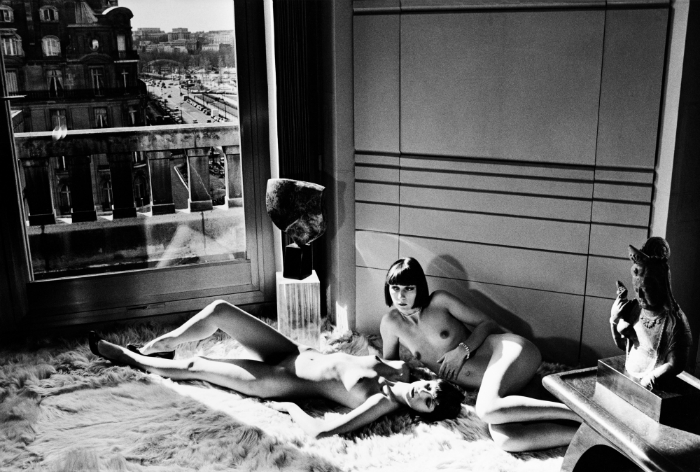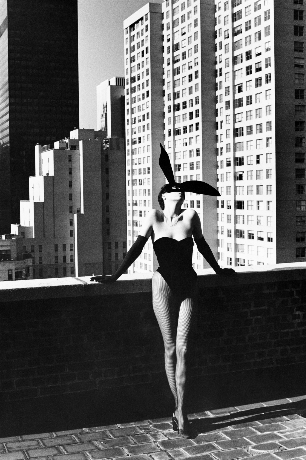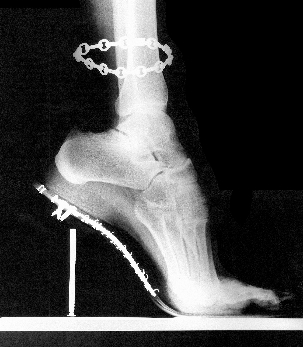A Gun for Hire
HELMUT NEWTON
Following in the wake of the successful Mind and Body (2008), Lucien Hervé 100 (2010) and The Birth of Photography (2012), the Museum of Fine Arts will again provide the venue for a new exhibition on photographic art.
| Magyar Múzeumok Online |
2013-04-04 09:00 |
The comprehensive oeuvre exhibition to run from the beginning of April will be displaying close to 250 photographs by Helmut Newton, one of the most authentic figures of twentieth-century photography. The show will take place thanks to cooperation with the Helmut Newton Foundation founded by the artist’s wife.

Helmut Newton was one of the most influential figures of twentieth-century photography whose name is synonymous with the revolutionary photography published in famed fashion magazines. The novel themes and positioning of his works often shocked and scandalised people, yet it cannot be denied that he transformed photography used in the advertising of his day. His central subjects were nudity, power, fashion, money, sensuality and brutality. He cannot simply be coined a fashion, a nude or a portrait photographer since his work over five decades spans several genres and is thus difficult to categorize.
He was attracted to taking pictures from a young age and when he grew up photography became a true passion for him. Thanks to the advertising and fashion shoots he did for noted designers and newspapers photography not only brought Helmut Newton a lot of pleasure but also created a comfortable livelihood for him. He said that for him the only thing of interest was the shape of a model’s body, although through his pictures he created his own peculiar atmosphere which distinguished him from other photographers. Viewers of his pictures are shocked and captivated by his unusual choice of subjects and dispassionate approach yet given an insight into the intimate moments and private lives of others. The portrait photos of his models are completely unique and characterised by intimacy and cold detachment. The list of celebrities he took photographs of is almost endless and it is suffice to mention but a few: Monica Belluci, Catherine Denevue, David Bowie, Claudia Schiffer, Jodie Foster, Sigourney Weawer, Linda Evangelista, Gena Rowlands, Madonna, Kate Moss, Carla Bruni, Ornella Muti, Cindy Crawford, Anthony Hopkins, Ralph Fiennes, and Andy Warhol.
 Newton was born on 31 October 1920 under the name Helmut Neustädter in Berlin, where he completed his schooling. He was already drawn to photography when still a child, which was when he bought his first camera. Between 1936 and 1938 he worked as an apprentice to the portrait- and fashion photographer Yva (Else Neuländer-Simon). As a response to the increasingly totalitarian rule of the Nazis he left Germany in 1938 for Singapore, taking with him nothing else but two cameras. From here he went on to Australia in 1940 and served in the Australian army for five years. He obtained Australian citizenship in 1946. In 1948 he married one of his former models, the actress June Brunell, with whom he lived for the rest of his life. During their marriage his wife also began to take photographs under the professional name of Alice Springs and made a film about her husband. In 1956 Newton signed a contract with the British Vogue magazine in London, which he broke eleven months later. After this he went to Paris and on returning to Melbourne he found a position with the Australian branch of Vogue. In 1961 he moved to Paris, where he worked for the French publisher of Vogue, and in addition to this he took photographs for the British versions of the magazine: Queen and Elle. In 1971, while in New York, Newton suffered a heart attack, from which he recovered. In 1975 his first exhibition was staged in Paris’ Nikon Gallery, and in the following year the first volume of his book White Women was published. In 1981 Helmut and June moved from Paris to Monaco, from which time they would travel to Los Angeles to spend the winters there. In 2000 a large-scale retrospective exhibition was organised for Newton in Berlin’s New National Gallery to celebrate his 80th birthday, the material of which was also later exhibited in London, New York, Tokyo, Moscow, Prague and other venues. In 2003 a formal agreement came into being between the Prussian Cultural Heritage Foundation (Stiftung Preußischer Kulturbesitz) to establish the Helmut Newton Foundation in Berlin, which opened in 2004, not long after Newton’s death.
Newton was born on 31 October 1920 under the name Helmut Neustädter in Berlin, where he completed his schooling. He was already drawn to photography when still a child, which was when he bought his first camera. Between 1936 and 1938 he worked as an apprentice to the portrait- and fashion photographer Yva (Else Neuländer-Simon). As a response to the increasingly totalitarian rule of the Nazis he left Germany in 1938 for Singapore, taking with him nothing else but two cameras. From here he went on to Australia in 1940 and served in the Australian army for five years. He obtained Australian citizenship in 1946. In 1948 he married one of his former models, the actress June Brunell, with whom he lived for the rest of his life. During their marriage his wife also began to take photographs under the professional name of Alice Springs and made a film about her husband. In 1956 Newton signed a contract with the British Vogue magazine in London, which he broke eleven months later. After this he went to Paris and on returning to Melbourne he found a position with the Australian branch of Vogue. In 1961 he moved to Paris, where he worked for the French publisher of Vogue, and in addition to this he took photographs for the British versions of the magazine: Queen and Elle. In 1971, while in New York, Newton suffered a heart attack, from which he recovered. In 1975 his first exhibition was staged in Paris’ Nikon Gallery, and in the following year the first volume of his book White Women was published. In 1981 Helmut and June moved from Paris to Monaco, from which time they would travel to Los Angeles to spend the winters there. In 2000 a large-scale retrospective exhibition was organised for Newton in Berlin’s New National Gallery to celebrate his 80th birthday, the material of which was also later exhibited in London, New York, Tokyo, Moscow, Prague and other venues. In 2003 a formal agreement came into being between the Prussian Cultural Heritage Foundation (Stiftung Preußischer Kulturbesitz) to establish the Helmut Newton Foundation in Berlin, which opened in 2004, not long after Newton’s death.
 The three photographic series exhibited by the Museum of Fine Arts are built on the summary works titled Helmut Newton’s Illustrated, Private Property and Gun for Hire, which were also published in book form. The photographs provide a cross-section of Newton’s nude and fashion photography, ranging from his early pictures to a posthumously published series.
The three photographic series exhibited by the Museum of Fine Arts are built on the summary works titled Helmut Newton’s Illustrated, Private Property and Gun for Hire, which were also published in book form. The photographs provide a cross-section of Newton’s nude and fashion photography, ranging from his early pictures to a posthumously published series.
Helmut Newton’s Illustrated contains a selection of his photos from a period of ten years published by the artist himself to enable him to put together his own selection that would show the heterogeneousness of his work independently of the wishes of editors, clients and specific exhibitions. He produced four editions in total: two were published in 1987 titled Sex and Power and Pictures from an Exhibition. In 1991 these were followed by I Was There, in which he probed into issues related to truth and falsehood. He produced the last of the four in 1995, the cover of which shows Newton himself lying on the ground and leaning on his elbow on the banner of one of his own nude pictures; the volume’s title is Dr. Phantasma.
The titles of the volumes say at least as much as their themes and each issue soon became popular among collectors. With their provocative mishmash of nudity, journalistic shots and portraits courting sensationalism these volumes became defining and powerful visual documents of the 80s and 90s.
 The Private Property – Portfolios contains a total of 45 photographs taken between 1972 and 1983, including fashion photos, portraits and erotically charged pictures. The exhibited photos were made by Thomas Conilvio, who achieved photo-lab archival quality by slightly toning the pictures in a selenium bath.
The Private Property – Portfolios contains a total of 45 photographs taken between 1972 and 1983, including fashion photos, portraits and erotically charged pictures. The exhibited photos were made by Thomas Conilvio, who achieved photo-lab archival quality by slightly toning the pictures in a selenium bath.
The volume A Gun for Hire surveys Newton’s fashion photos from the 1960s right up to his last work he made for the Italian Vogue – photos he took as a “gun for hire”. Included among his clients were Chanel, Yves Saint Laurent, Versace, Blumarine and Mugler. The title comes from a much quoted saying by Helmut Newton, “Some people's photography is an art. Mine is not. If ... If they happen to be exhibited in a gallery or a museum, that's fine. But that's not why I do them. I'm a gun for hire.” ("Newsweek", 02/02/04). As he said himself, his success was not thanks to the museums but rather to consumer society. He started out from the conditions set by the clients and a given budget, but he freely reinterpreted the collections, thus creating his own inimitable mishmash of elegance, consumerism and fashion photography.
HELMUT NEWTON 1920 ̶ 2004
Museum of Fine Arts 3 April ̶ 14 July 2013